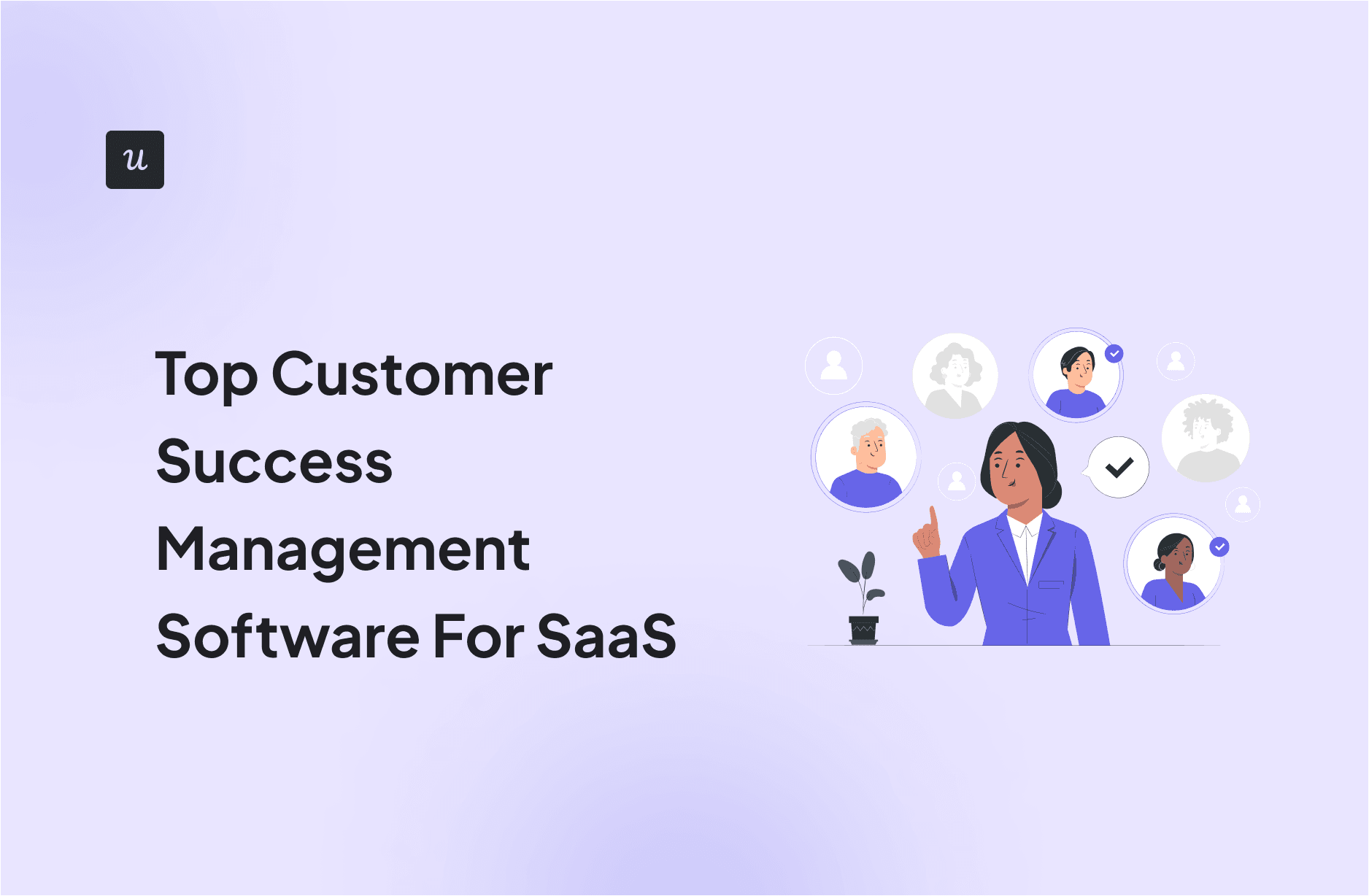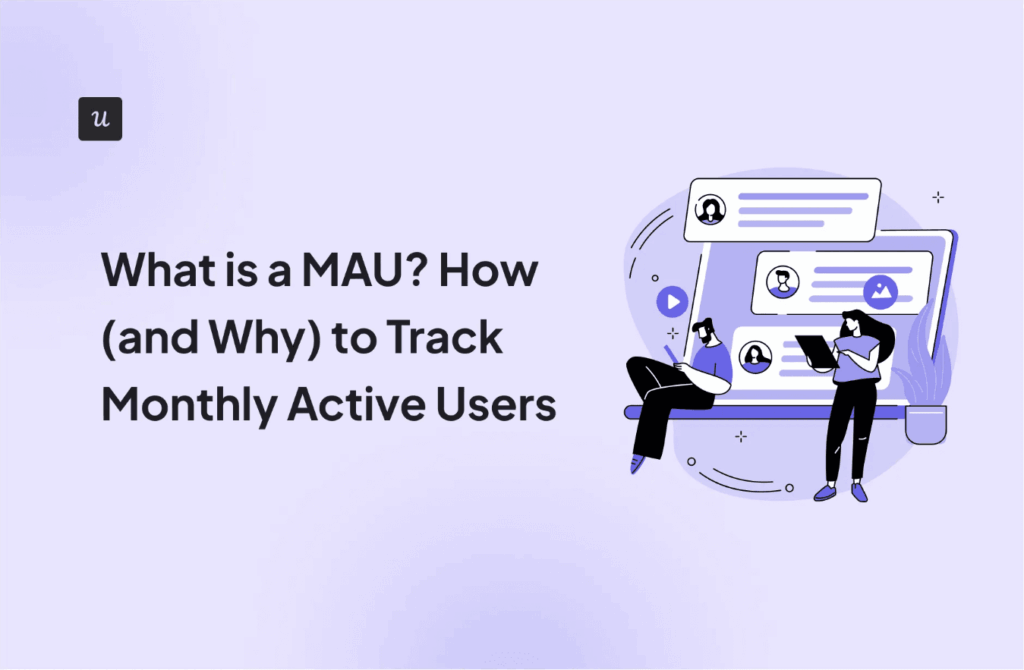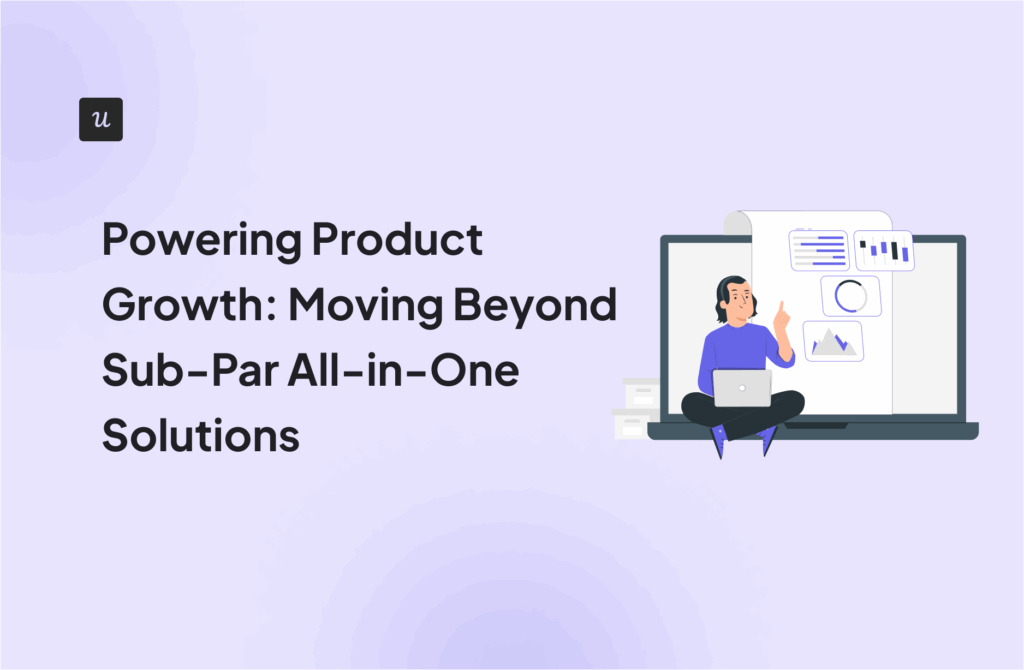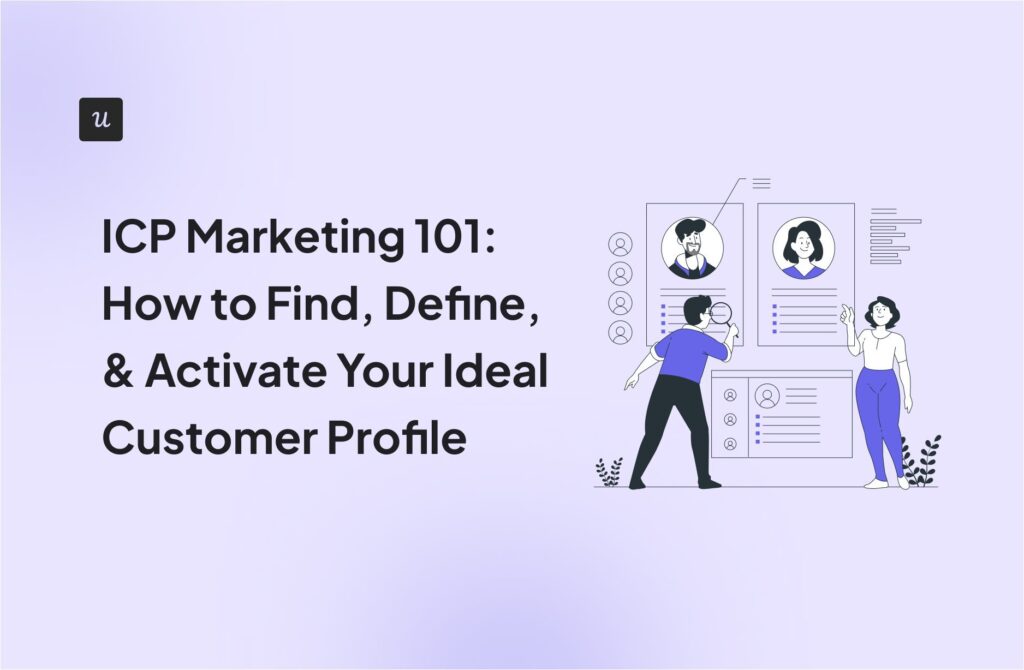
Try Userpilot Now
See Why 1,000+ Teams Choose Userpilot

What is customer success management software?
Customer success software is the suite of tools that companies use to monitor and optimize user experiences to help customers achieve their desired outcomes.
In other words, these tools provide businesses with actionable insights to address customer needs and drive them toward success.
What’s your biggest challenge with customer success right now?
How large is your company?
What are you currently using for customer success management software?
You’re ready to level up your customer success.
Based on your answers, a proactive approach with the right customer success management software can make a huge difference. See how Userpilot can help you onboard users, drive adoption, and reduce churn.
What are the benefits of using customer success software?
Customer success software offers several benefits, including:
- Improve customer satisfaction and loyalty: CSM software collects customer data, which aids in personalizing the customer experience. Personalized and engaging experiences not only help customers achieve value faster but also build trust with the brand and ultimately lead to customer loyalty.
- Reduce churn: CSM software helps businesses keep track of customer health scores and quickly spot customers at risk of churn. This allows businesses to proactively reach out to customers and resolve issues before they leave.
- Improve productivity: The right customer success software helps businesses streamline various aspects of customer management. For example, you can automate routine tasks such as onboarding, communication, and ticketing and free up time for your customer success employees that they can dedicate to more strategic initiatives.
Key features of customer success management software
An effective customer success software has the following features at its disposal:
- Customer data management. A good CMS software collects and centralizes different customer data (such as product usage data or customer feedback data) and creates a complete view of each customer. Additionally, good tools allow you to visualize data through different dashboards, charts, or graphs.
- Customer segmentation. A good customer success tool allows businesses to create segments based on shared customer attributes (demographic, OS system, returning customer, etc.) to provide more targeted experiences.
- Customer feedback collection. One of the key aspects of CSP Software is the ability to collect and analyze customer feedback and use the insights to improve the product experience.
- Workflow automation. CSM tools allow businesses to automate various activities, such as sending out messages at particular points in the customer journey or assigning tickets to customer support agents.
- Integrations. To get the most complete picture of your customers, your CSM tool should be able to integrate with the rest of your technology stack, like CRMs, ticketing software, marketing automation tools, and so on.
Top 10 customer success management software in 2024
To help you narrow down your choices, here are our picks for the top 10 customer success software in 2024.
1. Userpilot
Userpilot is an all-in-one growth platform that helps product teams boost key metrics through targeted in-app experiences.
Key features
Here are some of the Userpilot’s key features that can help with customer success management:
- Chrome extension builder: Userpilot’s code-free flow builder enables non-technical teams to create compelling in-app experiences. Using UI patterns such as checklists, modals, banners, tooltips, or hotspots, product teams can build interactive guides that drive user engagement and feature adoption.

- Event tracking: You can track in-app customer interactions like clicks, hovers, and form infills, and or combine chains of interactions as a singular event. Moreover, you can trigger even-based contextual flows for users.

- Advanced segmentation: Userpilot enables product teams to group users by shared attributes, such as product usage data, survey responses, location, language, etc., to deliver personalized experiences at scale.

- Funnel analysis: Funnel analytics allows you to track the steps customers take in-app and understand how many users advance from one stage to the next, how long it takes them, and where most users drop off. With such insights, you optimize different touchpoints in the journey and help users navigate through the product without friction.

- Path analysis: Userpilot’s path analysis tool lets you visualize user actions following or leading to an event and better understand what happens at each stage of the user journey. For example, if a user keeps going back and forth between two screens, it could indicate usability issues that make navigation difficult. Additionally, by analyzing the top paths of power users, you can discover the happy paths to conversion and put other users on them, too.

- Cohort tables: Cohort tables group user accounts based on shared characteristics or behaviors over time. By analyzing cohorts, you can uncover specific trends that might not be visible when examining the user base as a whole, which allows you to make precise adjustments to your product experience and drive better engagement.

- Analytics dashboards: Track key metrics such as active users, number of sessions, average session duration, or feature adoption within a singular, accessible hub. Either use pre-built dashboards or create custom dashboards with metrics of your choice.

- Product experimentation: Run A/B and multivariate tests to optimize engagement and improve adoption rates. You can link your engagement flows to a pre-defined goal and then monitor which flow helps results in its completion.

- Resource center: Userpilot enables you to offer your customers quick in-app help so they overcome all the problems and achieve success with it. With Userpilot, you can embed multiple types of support materials into the help center, automate content translation with AI localization, implement a search bar for quick support access, etc.

- In-app surveys: Get access to a variety of micro-survey templates or create and customize a survey from scratch code-free. You can add different types of close-ended questions and open-ended questions to collect comprehensive insights. After feedback collection, you can even analyze survey responses with intuitive dashboards.

2. Zendesk
Zendesk is a help desk platform that enables customer service teams to manage user inquiries, support tickets, and engagement through multiple communication channels.
Key features
Zendesk’s main features include:
- AI-powered service – Your customer support team can level up their service through AI-driven personalization and quick response suggestions.
- AI agents – This customer service platform lets you create AI agents to provide instant responses to queries that don’t require human intervention. It can also reduce your team’s workload.
- Live chat and ticketing – Customers can raise support tickets that your team can work on. Likewise, you can incorporate the live chat widget into your platform and help your customers in real time to boost customer engagement and satisfaction.
- Analytics – You can see all the analytics of interactions and tickets on Zendesk. This customer experience platform shows these analytics on pre-built dashboards with a bunch of charts to give you an in-depth insight into your team’s performance and customer experience (CX).

3. LiveAgent
LiveAgent is a comprehensive help desk software designed to streamline support operations.
Key features
LiveAgents main functionalities include:
- Live chat messaging: Easily create and integrate live chat widgets into your websites. With proactive chat invitations, you can invite your website browsers to chat with automatic messages.
- Universal inbox: Get a universal inbox for live chat messages, chatboxes, phone calls, and emails. The inbox also connects to social media platforms like Telegram, Facebook, Twitter, etc.
- Ticket management: LiveAgent’s ticketing system allows your support agents to manage customer support tickets from email, chat, and other channels in one place.
- Automation: Create rules and triggers to manage your support environment. For instance, you can set predefined conditions for ticket assignments or transfers.

4. Custify
Custify is a customer success management platform designed to help SaaS businesses manage and optimize their customer relationships to ensure retention.
- Churn prediction: Using machine learning algorithms, Custify analyzes historical data to identify patterns and indicators of potential churn. This allows CSMs to proactively address risks by intervening early with targeted actions designed to retain customers.
- Customer profiles: Detailed customer profiles aggregate all relevant information about each customer, including contact details, usage history, communication logs, and notes from CSMs. This comprehensive view helps in understanding the customer’s journey and personalizing interactions.
- Reporting & Analytics: Custify offers powerful reporting and analytics capabilities, with customizable dashboards that provide insights into key metrics such as customer health, NPS scores, churn rates, and revenue trends. These insights help in measuring the effectiveness of customer success efforts and making data-driven decisions.

5. Hubspot Service Hub
HubSpot Service Hub is a comprehensive platform designed to help businesses deliver exceptional support and build lasting relationships with their customers.
- Smart CRM: The CRM system provides advanced customer profile information gleaned from voice calls, live chats, and other data within the product. The customer profile updates automatically and in real-time, allowing for up-to-date context during customer interactions.
- Knowledge base: Businesses can set up a repository of useful articles, FAQs, and resources that customers can use to find solutions to their questions. This decreases the need for repetitive inquiries and gives customers quick access to essential information.
- Automated customer service: HubSpot can automate responses to basic troubleshooting concerns and FAQs. Moreover, you can personalize those automated responses based on customer segment.

6. Salesforce
Salesforce is a leading cloud-based customer relationship management platform that provides a comprehensive suite of tools for sales, customer service, marketing, commerce, and analytics.
- Einstein 1 – Salesforce offers generative and conversational AI to help you develop personalized customer experiences. You can use it for marketing, sales, e-commerce, and customer service. Einstein 1 also offers a copilot, prompt, and model builder to build an AI that’s customized to your needs.
- Unified customer data – Salesforce’s Data Cloud brings all your customer data together so you have a complete view of their likes, dislikes, and preferences. Whether it’s structured or unstructured data (including call transcripts), you can bring it all together. You can then use the built-in generative AI to make sense of this data and craft stellar experiences.
- Omni-Channel routing – Automatically route customer inquiries to the appropriate service agents based on predefined criteria.

7. Nextiva
Nextiva offers a comprehensive in-app communication suite with customer service tools that are specifically designed for small and medium-sized businesses.
It enables you to break data silos in customer communication and centralizes all customer data.
- Voice and video support – You can receive and make calls to your customers along with other channels like chat, SMS, and emails. You can also converse with customers over video calls. This helps you provide a truly conversational UX. Additionally, Nextiva offers an AI-powered conversational voice bot for IVA and IVR to speed up support.
- Messenger support – Apart from live chat and SMS, you can also provide customer service through platforms like WhatsApp, Instagram, and other messengers. This makes it easy for customers to reach out to you and get instant resolutions, leading to a better customer experience.
- Conversational analytics – You get access to real-time analytics to understand the impact of your customer support team. From the number of phone calls, video calls, and chats to social media mentions, you can view it all on Nextiva.

8.ClientSuccess
ClientSuccess is a software solution that helps SaaS executives, account management, and renewal teams retain and grow their existing customer base
- Customer journey management: Map out every stage of the customer journey, from the onboarding process to the renewal. You can then employ templated playbooks that outline the next steps for each stage of the lifecycle, as well as goals that track how customers are meeting expected milestones.
- Customer portals: The portal lets you share tasks, documents, videos, and progress reports on customer journeys. Take advantage of ClientSuccess’s project templates, which outline a clear, repeatable onboarding process.
- Automation: Trigger actions automatically based on a customer’s position in a lifecycle. For instance, you can send a welcome email to new users or NPS surveys to customers who completed a transaction.

9. Totango
Totango is a comprehensive software focused primarily on customer success and customer churn reduction.
- Customer health score. Totango monitors customer health via the consolidation of multiple data points and then creates a colored graph that shows health as either, good, neutral, or bad.
- Automatic assignment. Totango’s SuccessPlays feature acts as an automated task manager, delegating tasks and assigning team members automatically. When customers complete a set of actions, SuccessPlays triggers and gives a list of best practices regarding how best to respond to user interactions.
- Account view. The account view in Totango allows business users to view all the customer insights from individual customers in one singular dashboard. Sift through all the information by filtering only relevant metrics, and get a grasp on how to retain customers based on collected customer insights, all with ensured data security via GDPR compliance.

10. ChurnZero
ChurnZero is a customer success platform designed to help subscription businesses increase customer retention and drive expansion revenue.
It’s particularly popular among SaaS customer success managers, account managers, and executives.
- Customer health scoring: ChurnZero lets you monitor customer engagement, product usage, and other key metrics to proactively identify at-risk customers.
- Automated playbooks: You can automate personalized outreach and engagement campaigns based on customer health scores, milestones, or specific events. This ensures timely customer communication and proactive support.
- Customer segmentation: ChurnZero allows you to segment customers based on various attributes (e.g., industry, company size, product usage) to deliver targeted experiences and communications. You can use the granular data to create personalized experiences and improve engagement.

How to choose the right customer success platform
As you can see, there are different types of customer success management software, each with unique capabilities.
Of course, many software have overlapping feature sets, but still, there are also major differences, and not every platform will work for your business.
Here are some key steps and considerations to help you pick the right one for your company:
- Define your customer success goals: The very first step is understanding what customer success means to your business and how you define it. The goal can be boosting retention, increasing the NPS score, or increasing the free-to-paid conversion rate.
- Decide on your must-have functionalities: Once you’ve created a set of goals, think about the techniques you want to use to achieve them. This should give you an idea of what types of features you’ll need to be successful. Then identify the crucial features for your operations and make a list of the most essential features addressing your pain points.
- Consider pricing: Examine the software’s pricing structure to ensure that it matches your budget while still providing the necessary functionality. Consider not only the initial implementation cost, but also the ongoing maintenance, such as license fees, upgrades, and support.
- Assess the ease of use: Keep in mind that your CSM software is mostly going to be used by non-technical team members, so evaluate the user interface’s intuitiveness and simplicity of navigation to ensure it’s beginner-friendly.
- Evaluate the level of security provided: Data is the foundation of CSM software, therefore it’s critical to think about how your company’s and your customers’ data will be handled. Make sure the software you pick has data encryption and complies with industry standards to secure your data.
Conclusion
Customer success tools help guarantee a strong customer lifetime value and deliver long-term revenue growth. The right tool at your disposal can build your company’s success for years to come.
Are you ready to lead your clients to success? Sign up for a free Userpilot demo today and reap the rewards of customer success!








